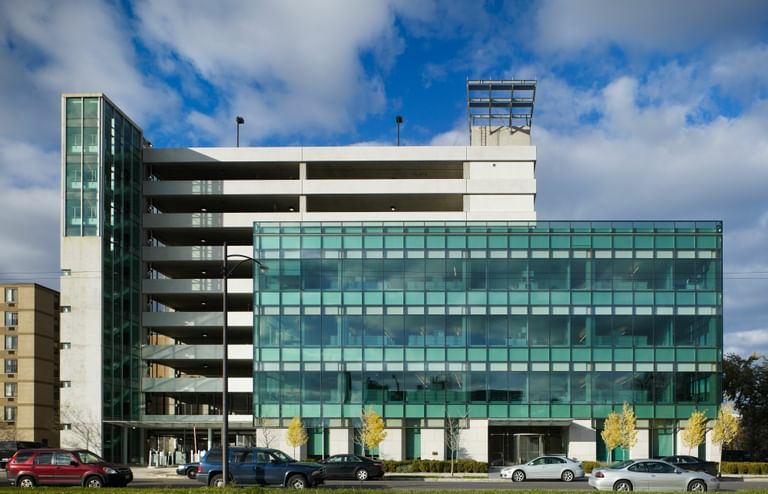Chicago Riverpark
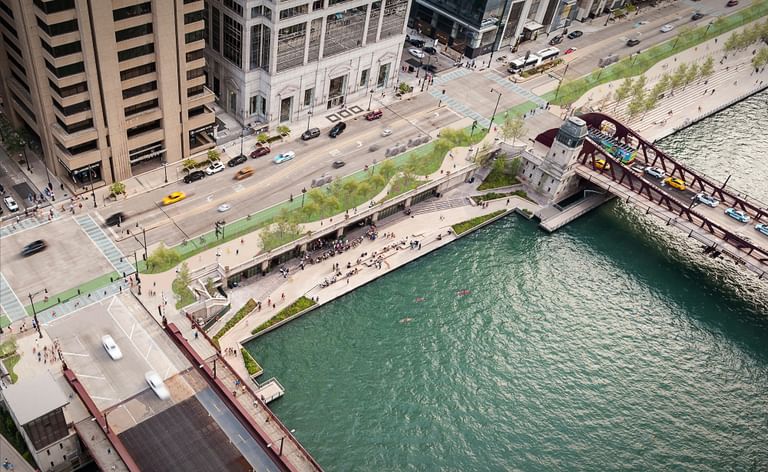
The Chicago Riverpark is poised to be an amenity for the City of Chicago; expanding on what exists, making connections, and bridging barriers. When it finished its final phase in 2016, the Chicago Riverwalk connected Chicagoans to the well-loved lakefront at river level. However, street level, where much of the life and activity of Chicago’s Central Business District takes place is ~20 feet above river level; a legacy of the 1909 Plan of Chicago.
Wacker Drive, which runs along the main and south branches of the Chicago River, serves as the primary thorough-fare for traffic but has seen volumes decline over the past decade. By removing one or two lanes from the roadway, an expand recreational and pedestrian zone next to the Riverwalk is created while maintaining needed-volume and access on the existing roadway.
The Riverpark proposal includes a bicycle path, relieving congestion along the river’s edge and providing a more comfortable place to ride. Perhaps most importantly for the cyclist, the Riverpark include a path that connects Upper Wacker Drive to Columbus Drive, the Chicago River, and the Lake.
Client: Active Transportation Alliance
Program: Roadway reclamation for urban park and pedestrian space
Size: 1 mile
Collaborative Partners:
Nelson Cheung (Chicago Department of Planning and Development)
Kelly Conolly (Sam Schwartz)
Martha Donnelly (42nd Ward Office)
Adam Flickinger (Friends of the Chicago River)
Christina Harris (Metropolitan Planning Council)
Jennifer Henry (Chicago Transit Authority)
Robert Kearney (42nd Ward Office)
Kalindi Parikh (Chicago Loop Alliance)
Tanvi Parikh (Skidmore, Owings and Merrill)
Ryan Parks (Chicago Department of Transportation)
Stacy Meekins (Sam Schwartz)
Jason Meter (Chicago Transit Authority)
Kelly O’Brien (Chicago Central Area Committee)
John Quail (Friends of the Chicago River)
David Smith (Chicago Department of Transportation)
Michelle Woods (Fleet and Facilities Management)
Theresa Foucher (SCB)
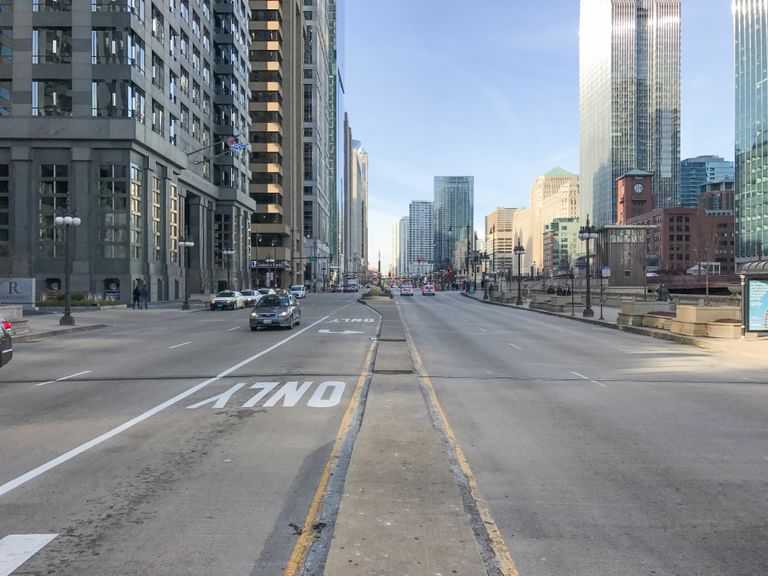
Existing Wacker Drive Condition


Existing Conditions
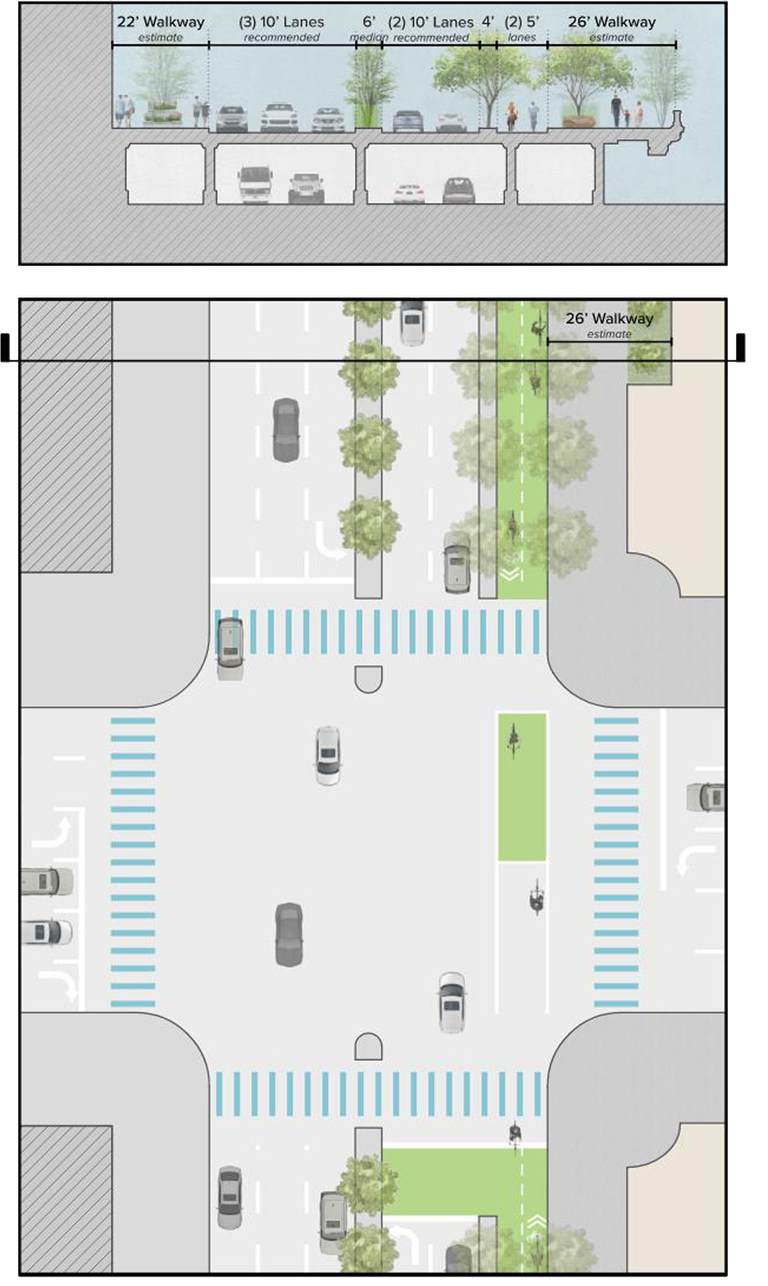
Proposed Alignment
Much of Wacker Drive has seven lanes (including parking). This number is no longer justified by the existing, anticipated, or desired number of motor vehicles. Removing one or two lanes from the roadway presents an opportunity to build on the success of the Chicago Riverwalk with expanded pedestrian and cycling infrastructure.
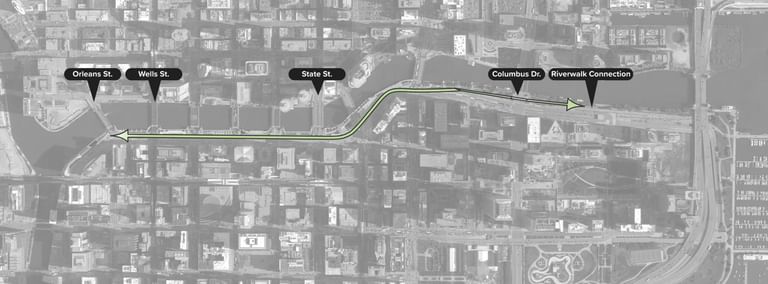
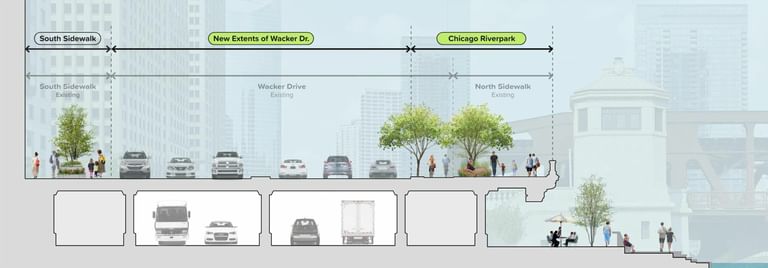
Building on the historical intent of the doubled-decked roadway, the Chicago Riverpark can enhance, beautify, and modernize Wacker Drive. On the upper deck, vehicular traffic for pleasure can be extended to co-mingle with pedestrians, while the lower level should be revitalized to encourage increased through-traffic.
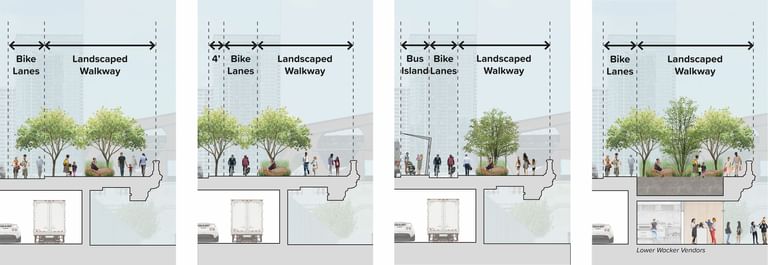
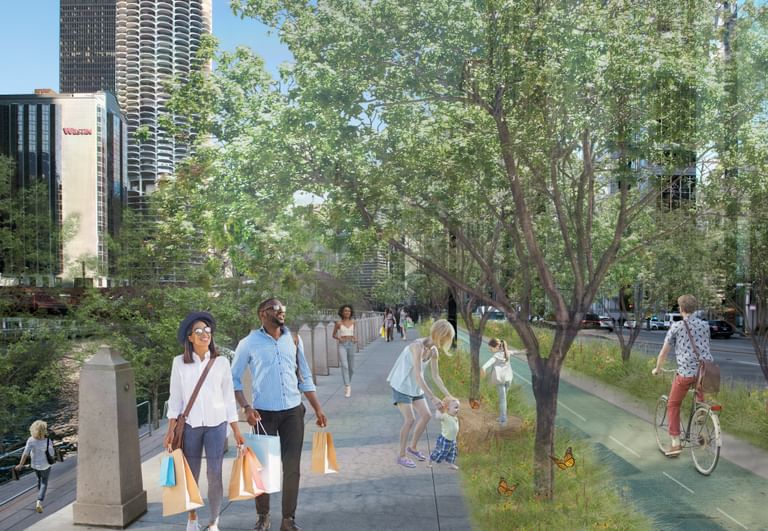
Building on the success of the Chicago Riverwalk; a public amenity of inestimable value, the Chicago Riverpark can further serve as an economic catalyst for the city’s thriving central business district and connect Chicagoans to the Chicago River.
The park has the potential to democratize the urban boulevard with space that is focused on transitional movement, and pedestrians.
